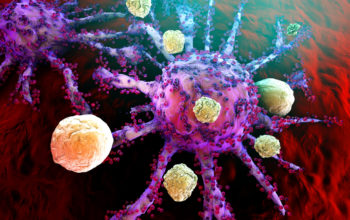
Date: 7th February 2022
Autism spectrum disorder (ASD) is a childhood-onset neurodevelopmental disorder that is characterised by cognitive, motor and sensory deficits. ASD has a strong genetic component, with risk contribution from hundreds of genes, and is estimated to affect ~1 in 44 children. However, the shared developmental effects that cause this large and heterogeneous collection of genes to converge on the phenotypic features of ASD remain poorly understood. Now, researchers have used brain organoids to model the developing human cerebral cortex, and investigate the roles of three ASD risk genes, showing they all confer asynchronous development of two main cortical neuronal lineage, but act through largely distinct molecular pathways.
In recent years there has been a revolution in the biomedical field with the advent of treatments for diseases caused by genetic mutation such as gene therapy. However, whilst this may in theory be simple for well-understood diseases perhaps caused by a single mutation, or a few mutations in a single gene, for many complex conditions this option remains elusive. Much effort is now being dedicated to understanding complex disease, and whether commonalities exist among the risk factors. By revealing these convergence points it is hoped to highlight common targets for broad therapeutic intervention, which releases treatment at the genetic origins of the disease.
Now, researchers at Harvard University and the Broad Institute of MIT and Harvard, US, led by Paola Arlotta have used brain organoids to discover that three different autism risk genes affect similar aspects of neural formation and the same types of neurons in the developing human brain, but have unique underlying molecular mechanisms. The brain organoids as a model will give researchers a much better understanding of autism spectrum disorder and are a first step toward finding treatments for the condition.
Despite its increasing prevalence, ASD is still a disorder with a poorly understood pathophysiology and sluggish drug discovery. Access to human brains resulting from mutations is severely limited, and due to its multifaceted nature animal models can only mimic aspects of the disease. However, brain organoids could in theory overcome these limitations, but up until recently were unable to be produced reproducibly.
In 2019, Arlotta and colleagues published a method to reproducibly create brain organoids that consistently form the same types of cells, in the same order, as the developing human cerebral cortex. Using these organoids grown up to 6 months, the team have now selected three ASD risk genes, SUV420H1, ARID1B and CHD8, and mutated the genes targeting the protein domains that are mutated in patients.
The team then analysed the organoids using several technologies. They found each of the three mutations conferred asynchronous development of two main cortical neuronal lineages—γ-aminobutyric-acid-releasing (GABAergic) neurons and deep-layer excitatory projection neurons. This resulted in altering the timing of these developing neurons, either accelerating or slowing down development.
By comparing gene expression changes and using whole-proteome mass spectrometry across the ASD risk genes the team discovered that the three mutants shared a degree of convergence in altered neurodevelopmental processes, but they affected largely distinct genes. This was mirrored by their dysregulation of different proteins.
In addition to testing different risk genes, the researchers also produced organoids using stem cells from different donor individuals. Here they found that between donors the overall neural developmental changes were similar however, interestingly the severity varied across individuals. This implied the ASD risk gene effects were fine-tuned by the rest of the donor genome, and explains the variable clinical manifestations seen in patients.
Conclusions and future applications
The team here have used brain organoids to unravel some of the complexities of ASD. They show that different ASD risk genes converge on a phenotype of asynchronous neuronal development but mostly diverge at the level of molecular targets. Furthermore, different human underlying genomic landscapes can modulate the manifestation of disease phenotypes.
In the future they hope that these results and model will encourage investigation of therapeutic approaches to modulate shared dysfunctional circuit properties together with shared molecular pathways. They envisage that by mapping the alteration in brain circuit due to genetic variations, will accelerate better diagnosis and uncover new avenues for therapeutic exploration.
New and unexpected discoveries in diseases as complex as autism, as seen here, will be a valuable contribution in accelerating treatments. Advances have recently been made in diagnosing subgroups of autism for future offspring, with 100% accuracy, using machine learning to identify specific pattern of maternal autobodies. Perhaps machine learning might prove a valuable tool for mapping genetic variants and alterations in brain circuits, revealing undiscovered links between underlying genome variations and ASD. Potentially in the more distant future, the ability to predict autism before birth, and the recent ability to treat genetic disease in utero using nanoparticles, mean that lessons learnt from these brain organoids can drive treatments for ASD before birth.
For more information please see the press release at the Broad Institute
Paulsen, B., Velasco, S., Kedaigle, A.J., Pigoni, M., Quadrato, G., Deo, A.J., Adiconis, X., Uzquiano, A., Sartore, R., Yang, S.M., et al. (2022). Autism genes converge on asynchronous development of shared neuron classes. Nature.
https://doi.org/10.1038/s41586-021-04358-6
http://eha.3a7.mywebsitetransfer.com/machine-learning-accurately-diagnoses-autism-via-maternal-biomarkers/
http://eha.3a7.mywebsitetransfer.com/nanoparticles-treat-genetic-diseases-in-utero/
